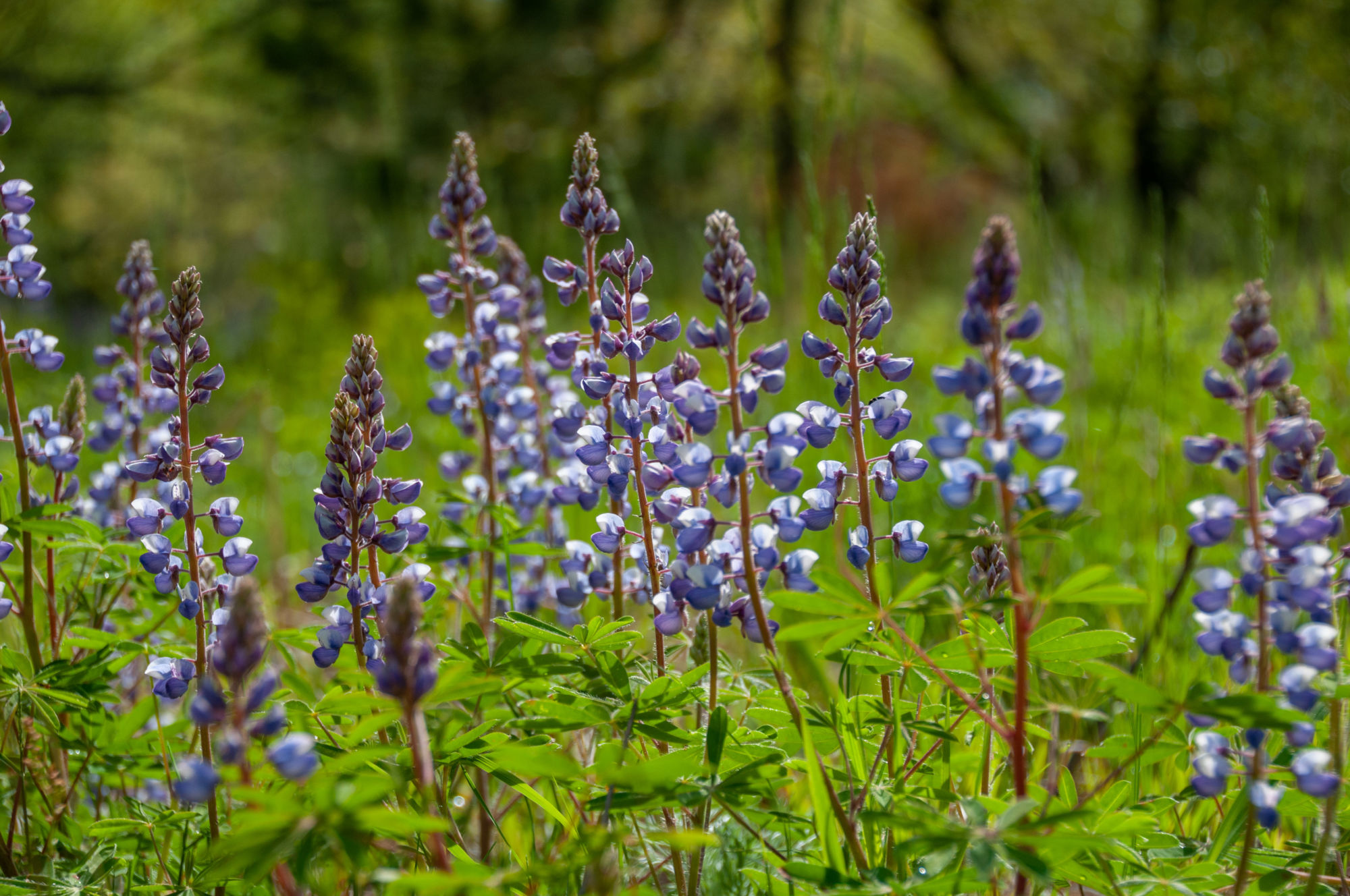Meet the Oak Savanna
Oak savannas occur in between two other habitat types, where a dense, shaded oak woodland gradually opens into sunny prairie.
In an oak savanna, mature oaks are spaciously scattered in an open field, free to stretch and grow wide crowns. They are joined by a modest population of baby oaks and shrubs. The rest is covered by grasses and forbs, featuring some species that enjoy the neighboring prairie habitat, and others which prefer the unique conditions the oak savanna provides.
Because it holds many niches, an immense variety of life is found in this in-between habitat.

Artist Colin Gaddis painted the above mural inspired by oak savannas for this year’s Pleasant Peninsula Art & Activism Fair. The painting features a Karner blue butterfly on a hand wielding a drip torch (a tool used in prescribed burns). In the lower right corner, a Cooper’s hawk holds an oak leaf in its beak.
There is an essential ingredient that helps maintain these niches by preventing the encroachment of trees and a subsequent flood of shade: periodic disturbance, usually by fire. While it does happen naturally, much of the disturbance that helped these habitats thrive was done by the hands of humans. Indigenous peoples used fire to clear areas for hunting, villages, and agriculture. These fires burned widely, kept forests from encroaching on prairies, and nurtured oak savannas.
When European colonists arrived in North America, they saw oak savannas as attractive places to build domiciles or clear for farming. With fewer trees to cut down, they were easier to convert to their preferred uses. Over time, this led to the near extirpation of this habitat.
Today, oak savannas occupy less than 0.5% of the landscape they once covered. The species that need them have likewise suffered.
Because oak savannas and their associated plants and animals are in decline, there are regional and national initiatives to support their restoration and resilience. The Land Conservancy of West Michigan is one organization working to make a difference.
How do we protect them?
The Land Conservancy of West Michigan protects natural land by supporting its acquisition by conservation-minded organizations and facilitating the protection of private land through conservation easements. We also acquire natural land that we own and manage: our nature preserves. These lands are protected from development in perpetuity. As their stewards, we work to preserve and restore their health.
Because oak savannas are at a critical point, we eagerly take opportunities to protect remnant savannas and prioritize restoring degraded habitats to savanna-like conditions. We are amidst such restoration projects on six of our 20 nature preserves. These efforts are part of a broader conversation with federal, state, tribal, and nonprofit conservation organizations who are all working toward similar goals. We also help interested conservation easement owners replicate these restoration efforts on their own land.
Learn more about these efforts in the rest of the newsletter!




